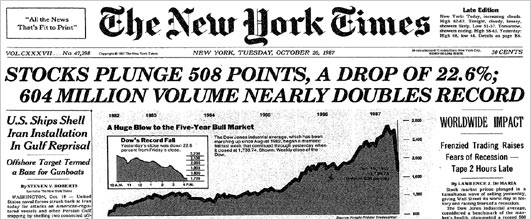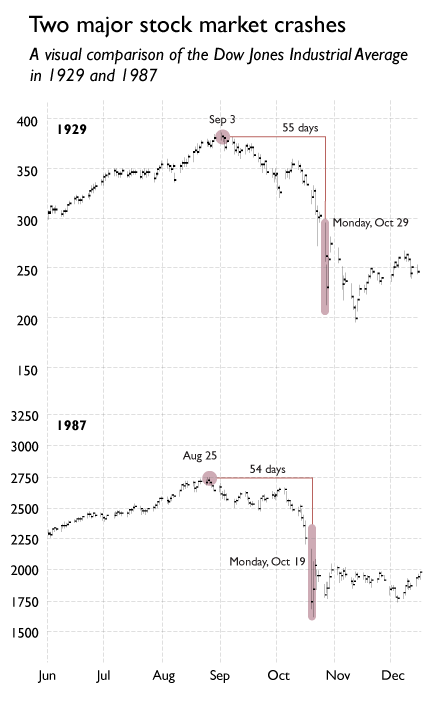| Sir Thomas Gresham, c. 1554 by Anthonis Mor |
Here's an old example of the problem. At the urging of Isaac Newton and John Locke, British authorities in 1696 embarked on an ambitious project to repair the nation's miserable silver coinage. This three-year effort consumed an incredible amount of time and energy. Something unexpected happened after the recoinage was complete. Almost immediately, all of the shiny new silver coins were melted down and sent overseas, leaving only large denomination gold coins in circulation.
What explains this incredible waste of time and effort? Because it offered to freely coin both silver and gold at fixed rates, the Royal Mint effectively established an exchange ratio between gold and silver. English merchants in turn accepted gold and silver coins at face value, or the mint's official rate, and debts were payable in either medium at the given rate. Unfortunately, the ratio the Mint had chosen overvalued gold relative to the world price and undervalued silver. Rather than spend their newly minted silver coins to buy £x worth of goods or to settle £y of debt, the English public realized that it was more cost-effective to use overvalued gold coins to purchase £x or settle £y. Then, if they melted down their full bodied silver coins and sent them across the Channel, the silver therein would purchase a higher quantity of real goods, say £x+1 goods, or settle more debts than at home, say £y+1 debts.
Newton and Locke had run into Gresham's law. When the monetary authority defines the unit-of-account (£, $, ¥) in terms of two different mediums, the market will always choose to transact using the overvalued medium while hording and melting down the undervalued medium. "Bad" money drives out the "good". (For a better explanation, few people know more about Gresham's law than George Selgin.)
The abrupt switches between metals that characterized bimetallism weren't the only manifestation of Gresham's law. Constant shortages of silver change in the medieval period were another sign of the law in operation. Over time, a realm's silver coinage would naturally wear out as it was passed from hand to hand. Clippers would shave off the edges of coins, and counterfeiters would introduce competing tokens that contained a fraction of the silver. Any new coins subsequently minted at the official standard would be horded and sent elsewhere. After all, why would an owner of a "good" full-bodied silver coin spend it on, say, a chicken at the local market when a "bad" debased silver coin would be sufficient to consummate the transaction? The result was a dearth of new full bodied coins, leaving only a fixed amount of deteriorating silver coins to serve as exchange media.
This sort of Gresham-induced silver coin shortage, a common phenomenon in the medieval period, was the very problem that Newton and Locke initially set out to fix with their 1696 recoinage. Out of the Gresham pan into the Gresham fire, so to say, since Newton and Locke's fix only led to a different, and just as debilitating, encounter with Gresham's law — the flight of all silver out of Britain.
Over the centuries, a number of technical fixes have been devised to fight silver coin shortages. By milling the edges of coins, clipping would be more obvious to the eye, thereby deterring the practice. High quality engravings, according to Selgin (pdf), rendered counterfeiting much more difficult. Selgin also points out that the adoption of restraining collars in the minting process created rounder and more uniform coins. Adding alloys to silver and gold strengthened coins and allowed them to circulate longer without being worn down. These innovations helped to prevent, or at least delay, a distinction between good and bad money from arising. As long as degradation of the existing coinage could be forestalled by technologies that promoted uniformity and durability, any new coins made to the official standard would be no better than the old coins. New coins could now circulate along with the old, reducing the incidence of coin shortages. Gresham's law had been cheated.*
Let's bring this back to modern money. As I wrote earlier, Gresham's Law is free to operate the moment that the unit of account is defined with reference to two different mediums rather than just one. In the case of bimetallism, the pound was defined as a certain amount of silver and gold, whereas in a pure silver system the unit was defined in terms of old debased silver coins and new full bodied silver coins. In our modern economy, £, $, ¥ are defined in terms two different mediums—central bank deposits and central bank notes.
Normally this dual-definition of modern units doesn't cause any problems. However, when economic shocks hit a central bank may be required to reduce interest rates to a negative level in order to execute monetary policy. Say it attempts to do so by setting a -5% interest rate on central bank deposits. The problem is that bank notes will continue to yield 0% since the technical wherewithal to create a negative rate on cash has not yet been developed. This disparity in returns allows a distinction between good and bad money to suddenly emerge. Just as full-bodied silver coins were prized relative to debased silver coins, the public will have a preference for 0% yielding cash over -5% yielding deposits. It's Gresham's Law all over again, with a twist...
...when rates fall to -5% it isn't the bad money that chases out the good, but the mirror image. Everyone will convert bad deposits into good cash, or, as Miles describes it, we get massive paper storage. All deposits having been converted into cash, the central bank loses its ability to reduce interest rates below 0% — it has hit the zero lower bound.
In this case, the reason that the good drives out the bad rather than the opposite is because a modern central bank promises to costlessly convert all notes into deposits and vice versa at a 1:1 rate. If bad -5% deposits can be turned into good 0% notes, who wouldn't jump on the opportunity?
To make our analogy to previous standards more accurate, consider that this sort of "reverse-Gresham effect" would also have arisen in the medieval period if the mint had promised to directly convert debased silver coinage into good coins at a 1:1 rate.** As it was, mints typically converted metal into coin, not coin into coin. If mints, like central banks, had offered direct conversion of bad money into good, everyone would have jumped at the opportunity to get more silver from the mint with less silver. Good coin would have rapidly chased bad coin out of circulation as the latter medium was brought to the mint. In offering citizens such a terrific arbitrage opportunity, the mint could very quickly go bankrupt.
Here's a medieval-era example of the "reverse Gresham-effect". When it called in the existing circulating silver coinage to be reminted in 1696, Parliament decided to accept these debased coins at their old face value rather than at their actual, and much diminished, weight. In the same way that everyone would quickly convert bad -5% deposits into good 0% cash given the chance, everyone jumped at this opportunity to turn bad coin into good. John Locke criticized this policy, noting that upon the announcement, clippers would begin to reduce the existing coinage even more rapidly. After all, every coin, no matter how debased, would ultimately be redeemed with a full bodied coin. Why not clip an old coin a bit more before bringing it in for conversion? Even worse, since the recoinage was to take two years, profiteers could repeatedly bring in bad coin for full bodied coin, clip their new good coins down into bad ones, and return them to the mint for more good coin. Locke pointed out that this would come at great expense to the mint, and ultimately the tax-paying public. [For a good example of Locke's role in the 1696 recoinage, read Morrison's A Monetary Revolution]
Just as the reverse-Gresham effect would cripple a mint, allowing free conversion of -5% deposits into 0% notes would be financial suicide for a bank. As I've suggested here, any private note-issuing bank that found it necessary to reduce rates below zero would quickly try to innovate ways to save themselves from massive paper conversion. Less driven by the profit motive, central banks have been slow to innovate ways to get below zero. Rather, they have avoided the reverse-Gresham problem by simply keeping rates high enough that the distinction between good and bad money does not emerge.
In order to allow a central bank to set negative rates without igniting a reverse-Gresham rush into cash, Kimball has proposed the replacement of the permanent 1:1 conversion rate between cash and deposits with a variable conversion rate. Now when it reduces rates to -5%, a central bank would simultaneously commit itself to buying back cash (ie. redeeming it) in the future at an ever worsening rate to deposits. As long as the loss imposed on cash amounts to around 5% a year, depositors will not convert their deposits to cash en masse when deposit rates hit -5%. This is because cash will have been rendered equally "bad" as deposits, thereby removing the good/bad distinction that gives rise to the Gresham effect. The zero lower bound will have been removed.
To summarize, Kimball's variable conversion rate between cash and deposits is a technical fix to an age-old problem. Gresham's law (and the reverse-Gresham law) kick in when the unit of account is defined by two different mediums, one of which becomes the "good" medium and the other the "bad". When this happens, people will all choose to use only one of the two mediums, a choice that is likely to cause significant macroeconomic problems. In the medieval days, it led to shortages of small change. Nowadays it prevents interest rates from going below 0.
In this respect, Miles's technical fix is no different from the other famous fixes that have been adopted over the centuries to reduce the good vs bad distinction, including milled coin edges, high quality engravings, alloys, mint devaluations, and recoinages. Milled edges may have been new-fangled when they were first introduced five centuries ago, but these days we hardly bat an eye at them. While Miles's suspension of par conversion may seem odd to the modern observer, one hundred years from now we'll wonder how we got by without it. In the meantime, the longer we put off fixing our modern incarnation of the Gresham problem, the more likely that future recessions will be deeper and longer than we are used to — all because we refuse to innovate ways to get below zero.
*Debasing the mint price, or the amount of silver put into new coins (other wise known as a devaluation, explained in this post), was another way to ensure that old and new silver coins contained the same amount of silver. A devaluation rendered all new coin equally "bad" as the old coin, ensuring that Gresham's law was no longer free to operate. In addition to devaluations, constant recoinages re-standardized the nation's circulating medium. Much like a devaluation, a recoinage removed the distinction between good and bad coins, at least for a time, thereby nullifying the Gresham effect and putting a pause to coin shortages.
** In a bimetallic setting, the process would have worked like this. Say that the mint promised to redeem gold with silver coins and vice versa at the posted fixed rate. When this rate diverges from the market, buyers needn't send the overvalued coin overseas to secure a market price. They only had to bring all their overvalued coins (the bad ones) to the mint to exchange for undervalued ones (the good ones), until at last no bad coins remained. Thus the good drives out the bad. In the meantime, the mint would probably have gone out of business.






